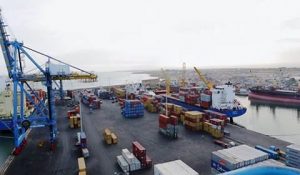
April 25, 2018//-Few days after World Bank’s damning verdict on Sub-Saharan African (SSA) countries’ rising debt, another report has revealed that the debt loads could threaten the region’s outlook.
FocusEconomics FocusEconomics, a leading provider of economic analysis and forecasts for 127 countries in Africa, Asia, Europe and the Americas which made this disclosure in its May 2018 estimate maintained: “While the economic panorama is improving, several weak spots remain, including high debt loads and large imbalances, which could threaten the region’s outlook”.
It added that most of the economies in the region remain poorly diversified and lack infrastructure, and the region’s business environment is challenging overall. These issues need to be tackled by policymakers, but progress has been mixed in recent weeks.
However, a more complete set of data indicated that growth edged up in SSA economy in the final quarter of 2017, as the region’s gradual recovery continued.
“Regional GDP increased 3.2% annually in fourth quarter (Q4), above last month’s preliminary estimate of a 3.0% expansion and Q3’s 3.0% increase. The reading marked the fastest growth rate since Q3 2015 as higher commodity prices, solid global growth and healthier harvests boosted activity”, the economists at FocusEconomics explained.
For 2017 as a whole, the SSA economy grew 2.8%, notably above 2016’s 1.8%. Ghana was the region’s star performer in the fourth quarter, expanding a buoyant 8.1% in annual terms, according to them.
Surging activity in the energy sector and a strong agricultural sector fueled the upbeat reading. Meanwhile, Botswana’s economy accelerated notably in Q4, following a lackluster performance in the first three quarters of the year, and rising copper prices spurred faster growth in Zambia.
Regarding the region’s major players, growth gained steam in both Nigeria and South Africa. While the macroeconomic picture in the region is clearly improving after a commodity price-induced slowdown in 2015–2016, several challenges linger.
Angola, Ethiopia and South Africa have all taken steps in the right direction, although it remains to be seen if their corrective actions will be successful.
On 17 April, Angola officially requested non-financial assistance from the IMF as authorities try to attract FDI inflows and diversify away from the battered energy sector.
President João Lourenço has vowed to turn the economy around and correct imbalances, but it is uncertain if the political willpower for tough reforms will hold.
In Ethiopia, a new prime minister was sworn in at the start of April to cool simmering political and ethnic tensions and open the way for reforms. Mass unrest has interfered with policymaking in recent months, and a political shuffle could help.
Meanwhile, the political transition in South Africa, which saw Cyril Ramaphosa take power, has sparked optimism over the country’s reform momentum.
Ramaphosa has appointed respected ministers to key roles, taken steps towards improving the government’s finances and is focused on turning around struggling state companies. However, the ruling party remains deeply divided, which could complicate policy efforts; bolder reforms are needed to fix the economy.
Conversely, authorities in Nigeria have still not passed the 2018 budget, delaying an expected boost to government infrastructure spending. The record NGN 8.6 trillion (approximately USD 28.2 billion) budget was first presented in November; however, delays over ministries coming before parliament to defend their allocations has delayed its implementation.
Outlook
Growth in Sub-Saharan Africa’s economy is projected to gain momentum this year thanks to firmer commodity prices, a healthy global economy and recoveries in the region’s major players, Nigeria and South Africa.
FocusEconomics panelists see regional GDP expanding 3.5% in 2018, up a notch from last month’s forecast.
Next year, growth is seen accelerating to 3.7%. This month’s raised outlook for the region was driven by upward revisions for the bulk of SSA economies. Eight economies saw their prospects upgraded, including Angola, Kenya and South Africa.
However, Botswana, Mozambique and Zambia all saw their outlooks downgraded. Meanwhile, Nigeria and Tanzania saw no changes to their forecasts. Ethiopia is expected to be the best performer in SSA this year, with 7.9% growth, followed by Ghana (7.3%) and Côte d’Ivoire (7.1%).
On the other hand, the region’s major players are expected to be the slowest growing economies. Angola’s economy is seen growing 1.8%, South Africa is seen expanding 1.9% and Nigeria’s GDP is projected to increase 2.6%.
African Eye Report


